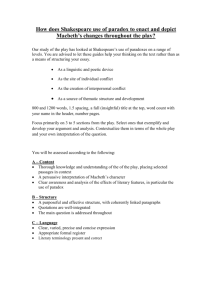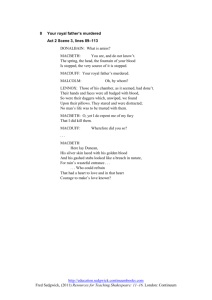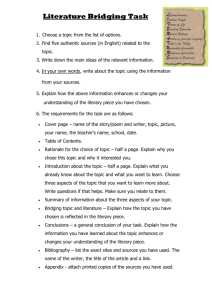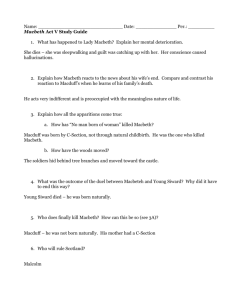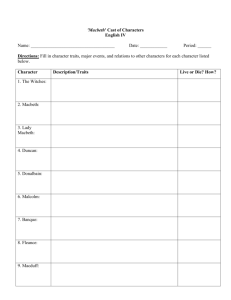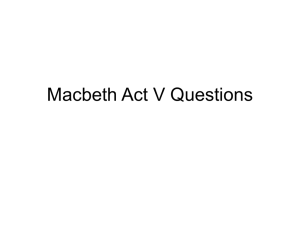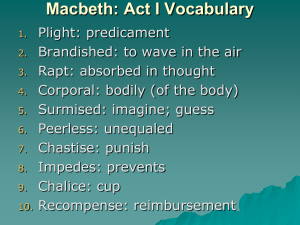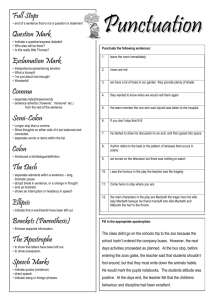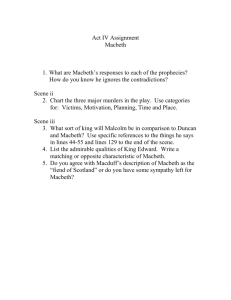Name CSCOPE Test for English IV (4th six weeks) Instructions
advertisement
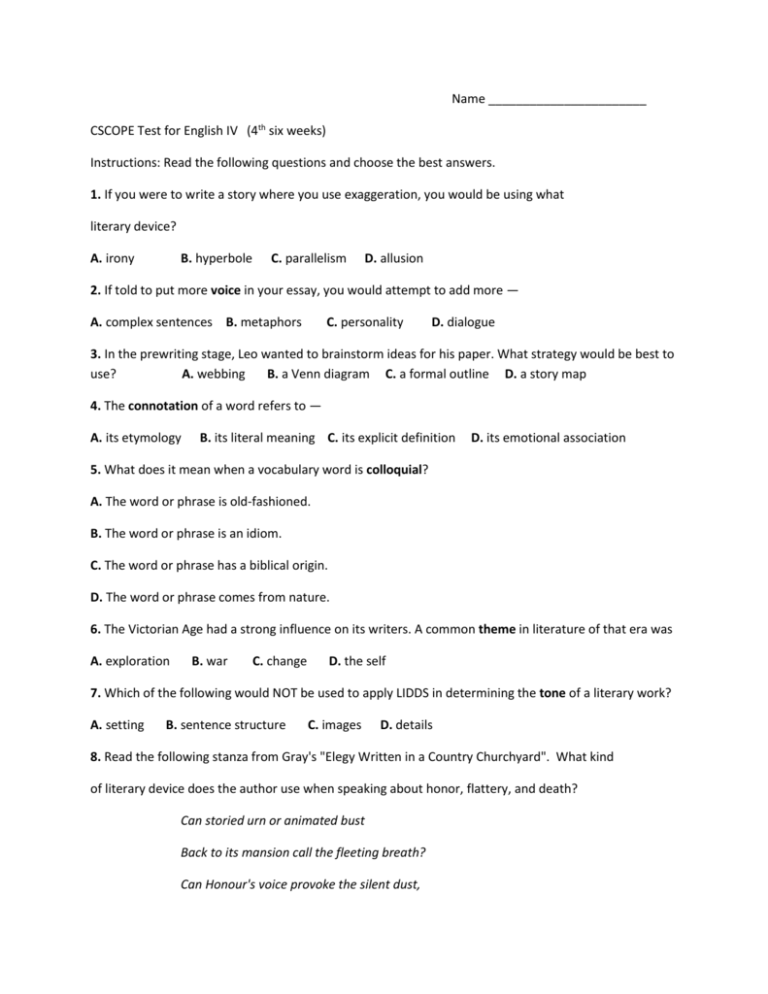
Name _______________________ CSCOPE Test for English IV (4th six weeks) Instructions: Read the following questions and choose the best answers. 1. If you were to write a story where you use exaggeration, you would be using what literary device? A. irony B. hyperbole C. parallelism D. allusion 2. If told to put more voice in your essay, you would attempt to add more — A. complex sentences B. metaphors C. personality D. dialogue 3. In the prewriting stage, Leo wanted to brainstorm ideas for his paper. What strategy would be best to use? A. webbing B. a Venn diagram C. a formal outline D. a story map 4. The connotation of a word refers to — A. its etymology B. its literal meaning C. its explicit definition D. its emotional association 5. What does it mean when a vocabulary word is colloquial? A. The word or phrase is old-fashioned. B. The word or phrase is an idiom. C. The word or phrase has a biblical origin. D. The word or phrase comes from nature. 6. The Victorian Age had a strong influence on its writers. A common theme in literature of that era was A. exploration B. war C. change D. the self 7. Which of the following would NOT be used to apply LIDDS in determining the tone of a literary work? A. setting B. sentence structure C. images D. details 8. Read the following stanza from Gray's "Elegy Written in a Country Churchyard". What kind of literary device does the author use when speaking about honor, flattery, and death? Can storied urn or animated bust Back to its mansion call the fleeting breath? Can Honour's voice provoke the silent dust, Or Flattery soothe the dull cold ear of Death? A. personification B. assonance C. onomatopoeia D. alliteration 9. In analyzing literature for the prevailing emotional attitude in that work, you are determining the — A. tone B. mood C. motif D. style 10. If Macduff is the hero in Shakespear’s play, The Tragedy of Macbeth, he could also be called the play’s A. protagonist B. antagonist C. catalyst D. villain 11. If William Shakespeare designed his play, The Tragedy of Macbeth, to show all the events which result in the killing of Macbeth, what type of text structure did he use? A. problem/solution B. chronological C. cause/effect D. comparison/contrast 12. At the end of the play, The Tragedy of Macbeth, Macbeth learns that Macduff was NOT literally born of a woman because he was cut out of his mother’s stomach by surgery. This unexpected twist in the plot is called — A. symbolism B. allusion C. satire D. irony 13. In the Victorian monologue poem, “Porphyria’s Lover,” the author desribes the male lover as the evil character through his action of strangulation. Because of this male character’s violent action, he can be called the play’s ______ in this part of the monologue poem. A. protagonist B. antagonist C. archetypes D. heroines Instructions: Write your paragraphs on notebook paper. Write CLEARLY and make sure to give the title and author of the piece of literature you choose to use. When you state your ideas make sure to give specific EVIDENCE from the piece you’ve chosen to PROVE those ideas are correct. 14. Choose a piece of Victorian literature which you have studied in class this six weeks. Describe how the theme, the characters and the content represent the thinking of the times. What does the piece tell you about the Victorian Era? Give evidence for you answer and be sure to mention the work’s title and author. 15. Select a piece of Victorian literature that you have studied this six weeks. Name the literary work and describe characteristics of the text, such as organization, word choice and tone. Give evidence for your answer. Answer Key IV1094016D # Item ID Key TEKS Stimulus A 12.12E - 1 EEnglish 9 EEnglish IV1093972D IV1093986D B 12.1D - B 12.13F - 2 EEnglish 10 EEnglish IV1093974D IV1093988D C 12.1D - A 12.12A - 3 EEnglish 11 EEnglish IV1093976D IV1093992D A 12.5A - C 12.8E - 4 EEnglish 12 EEnglish IV1093978D IV1094010D D 12.7B - D 12.12G - 5 EEnglish 13 EEnglish IV1093980D IV1094006D A 12.7B - B 12.12A 6 EEnglish IV1093982D C 12.12A 7 EEnglish IV1093984D A 12.13E 8 EEnglish
